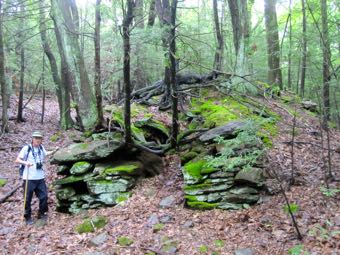 If you know where to look in Seymour, you can still see remnants of a giant outdoor furnace that Colonial farmers used to turn marble into lime for their fields. Just how this process worked will be the focus of a program at the Seymour Historical Society on Sunday, April 26 at 2 p.m.
If you know where to look in Seymour, you can still see remnants of a giant outdoor furnace that Colonial farmers used to turn marble into lime for their fields. Just how this process worked will be the focus of a program at the Seymour Historical Society on Sunday, April 26 at 2 p.m.
Millions of years ago, the state was covered by an ocean that included a coral reef. Over time, the reef metamorphosed into marble. Beginning in the late 17th century, farmers used the marble to enhance crop growth by lowering soil acidity. But it first had to be burned in a large outdoor kiln, producing a chalky substance known as “burnt lime.”
Two local kilns were constructed, and one still remains in Seymour. In this program, Peter and Barbara Rzasa will describe the kiln, the marble quarries and ancient mining roads that still can be found in Little Laurel Lime Park.
The Seymour Historical Society is located at 59 West Street, near the Trinity Episcopal Church. The program is free to Seymour Historical Society members and $5 for non-members. Doors open at 1 p.m. For more information, call 203 – 881-2156, contact .(JavaScript must be enabled to view this email address). Or visit www.seymourhistoricalsociety.org.